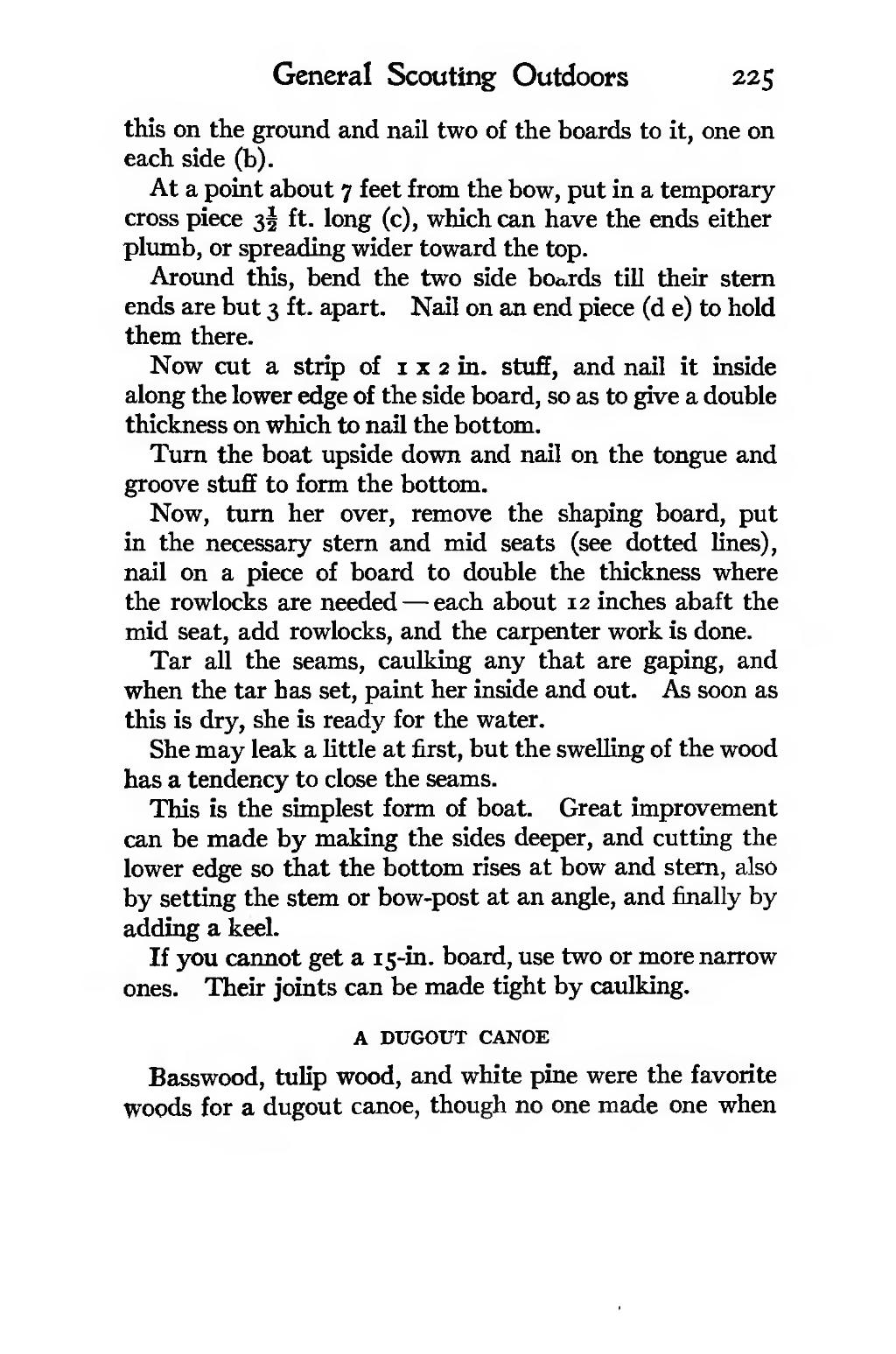General Scouting Outdoors 225 this on the ground and nail two of the boards to it, one on each side (b). At a point about 7 feet from the bow, put in a temporary cross piece 3^ ft. long (c), which can have the ends either plumb, or spreading wider toward the top. Around this, bend the two side boards till their stern ends are but 3 ft. apart. Nail on an end piece (d e) to hold them there. Now cut a strip of i x 2 in. stuff, and nail it inside along the lower edge of the side board, so as to give a double thickness on which to nail the bottom. Turn the boat upside down and nail on the tongue and groove stuff to form the bottom. Now, turn her over, remove the shaping board, put in the necessary stern and mid seats (see dotted hnes), nail on a piece of board to double the thickness where the rowlocks are needed — each about 12 inches abaft the mid seat, add rowlocks, and the carpenter work is done. Tar all the seams, caulking any that are gaping, and when the tar has set, paint her inside and out. As soon as this is dry, she is ready for the water. She may leak a little at first, but the swelling of the wood has a tendency to close the seams. This is the simplest form of boat. Great improvement can be made by making the sides deeper, and cutting the lower edge so that the bottom rises at bow and stern, also by setting the stem or bow-post at an angle, and finally by adding a keel. If you cannot get a 15-in. board, use two or more narrow ones. Their joints can be made tight by caulking. A DUGOUT CANOE Basswood, tulip wood, and white pine were the favorite woods for a dugout canoe, though no one made one when
Stránka:book 1913.djvu/247
Z thewoodcraft.org
Tato stránka nebyla zkontrolována
